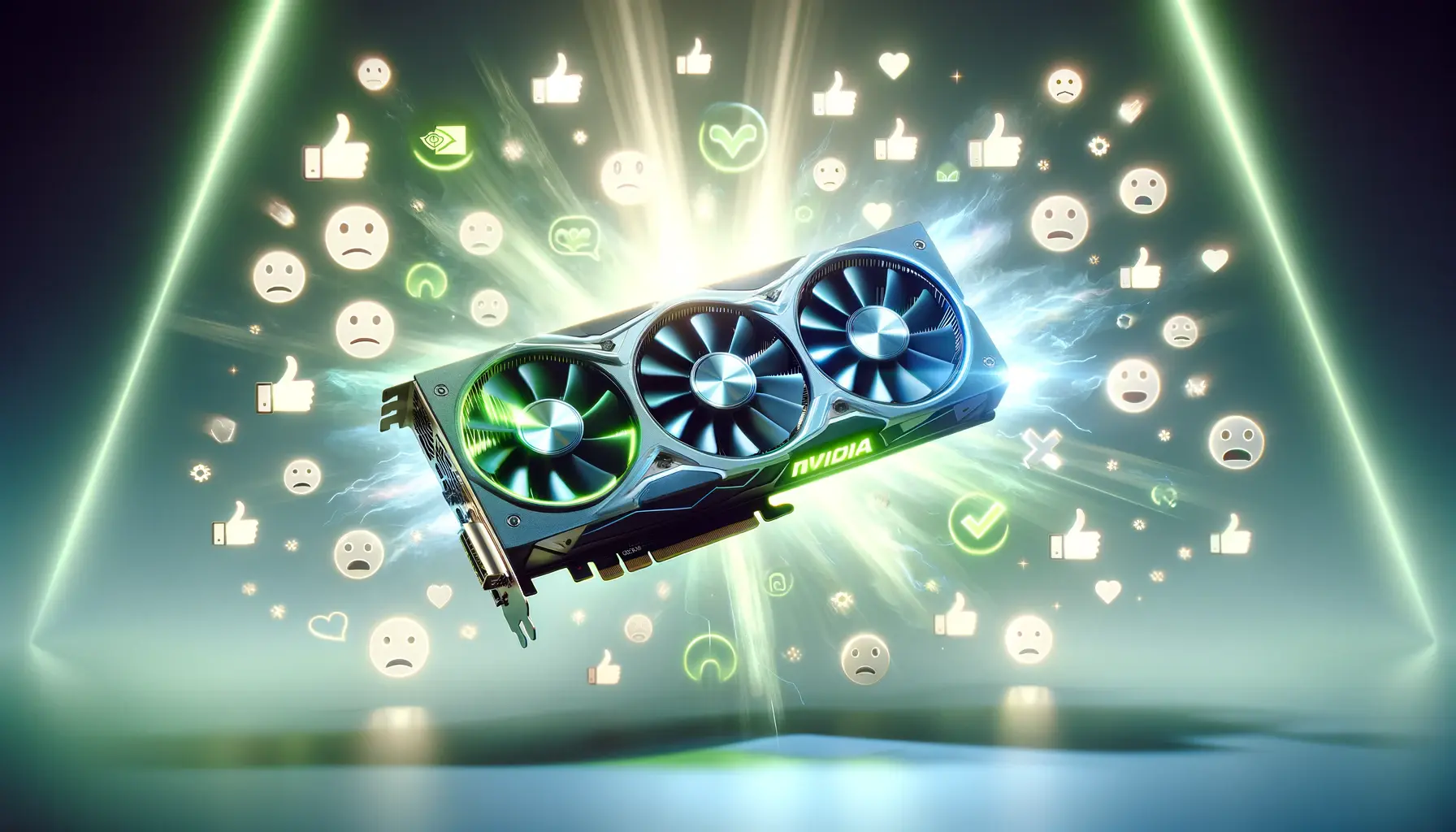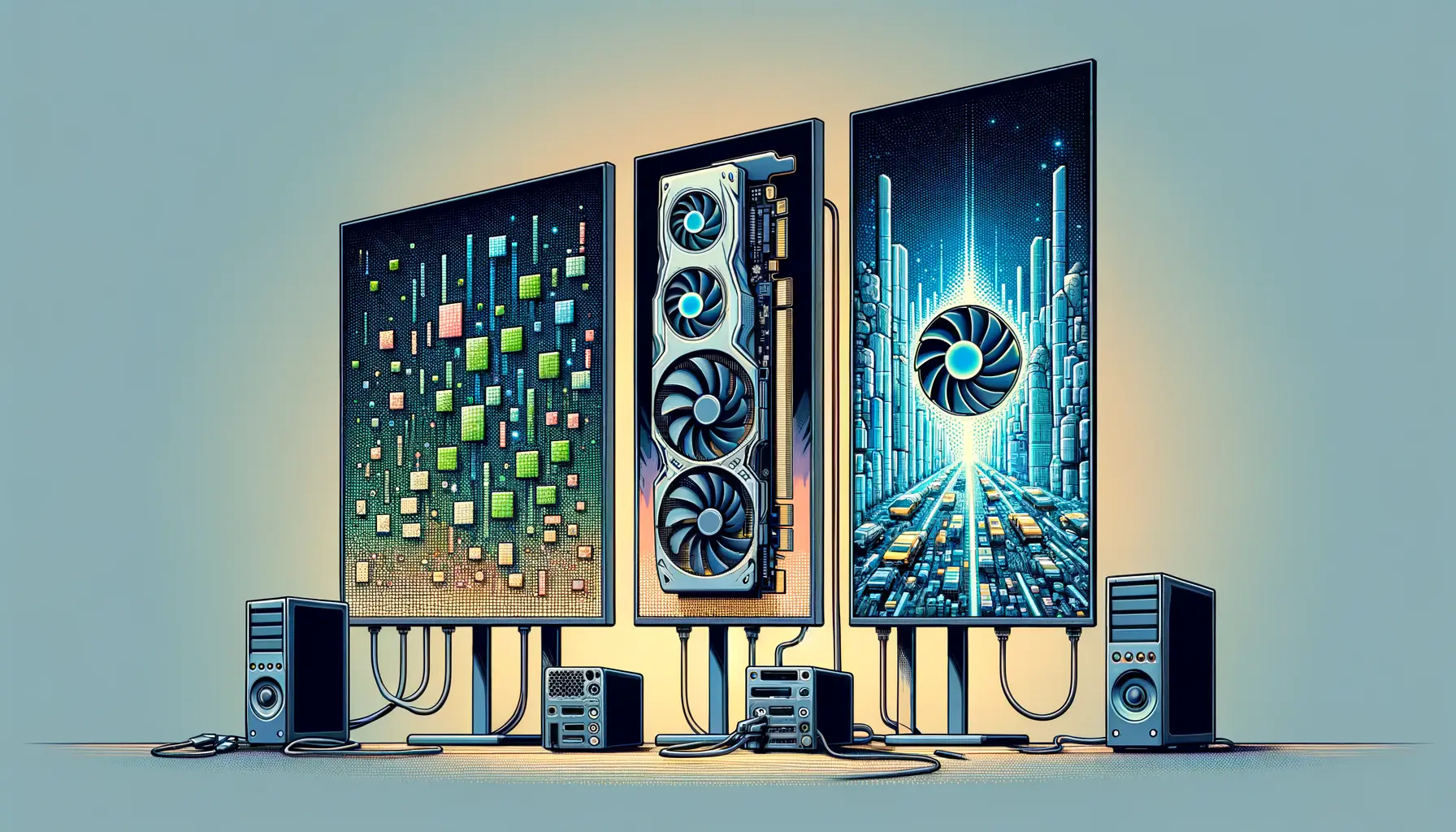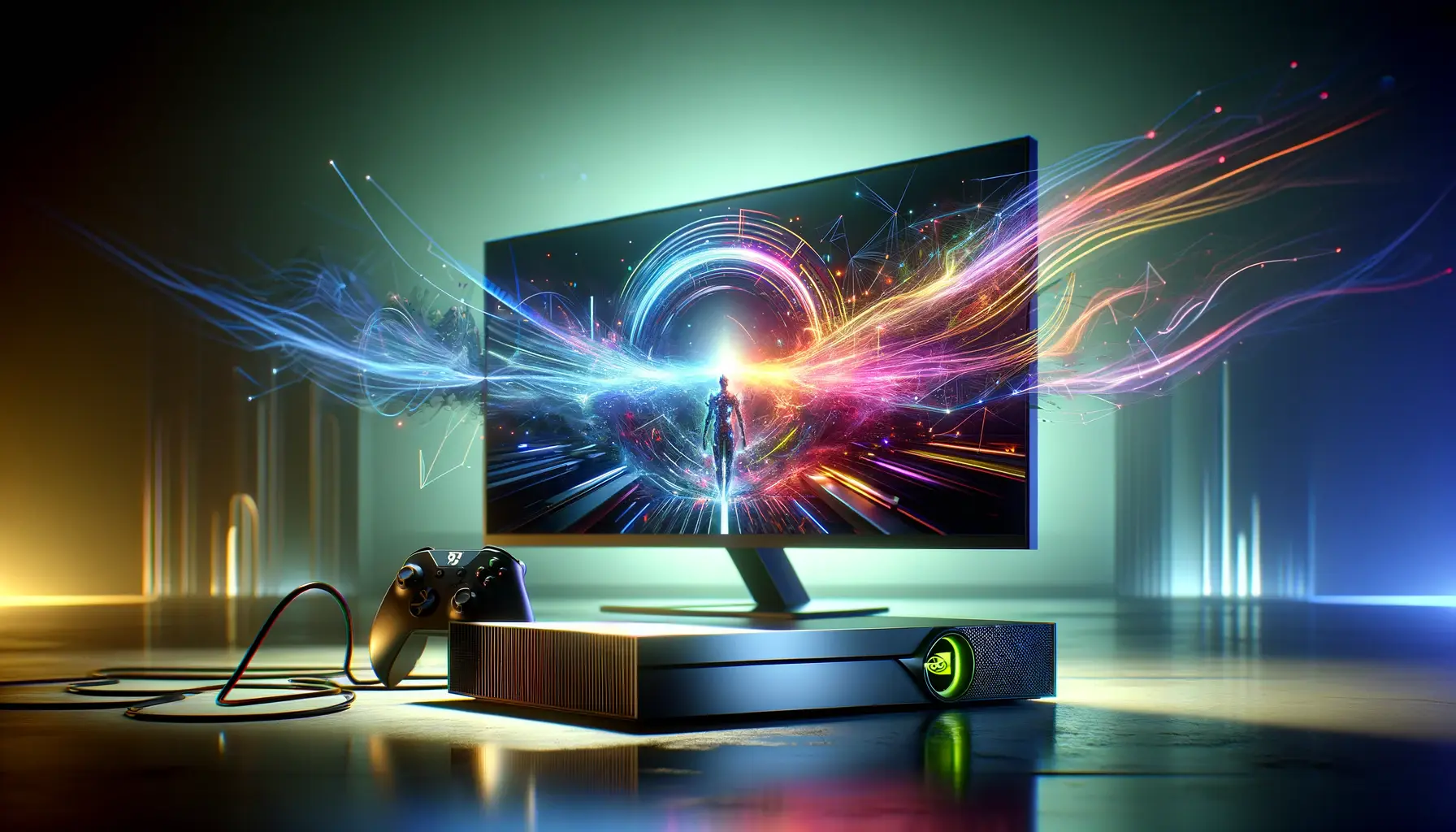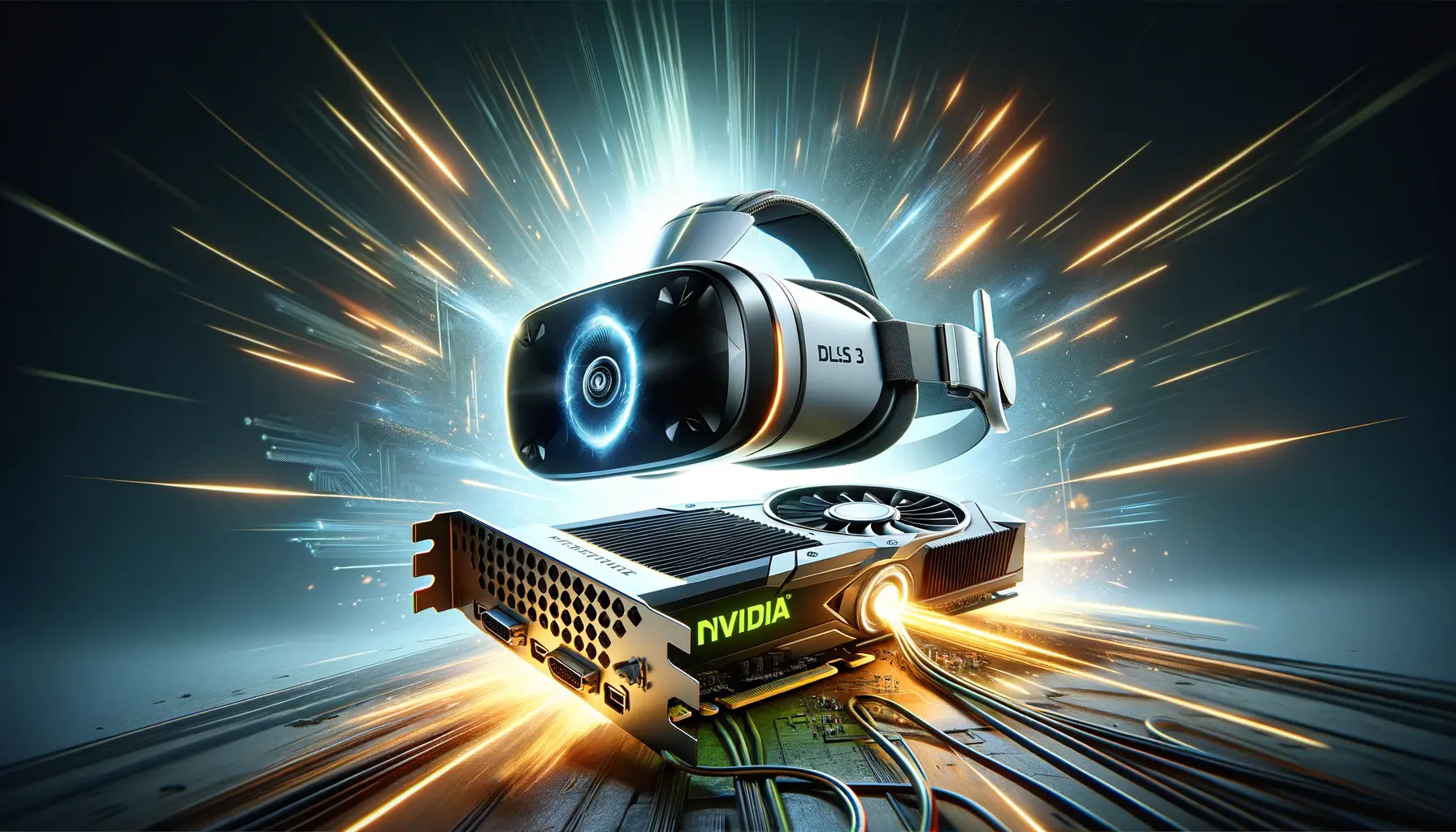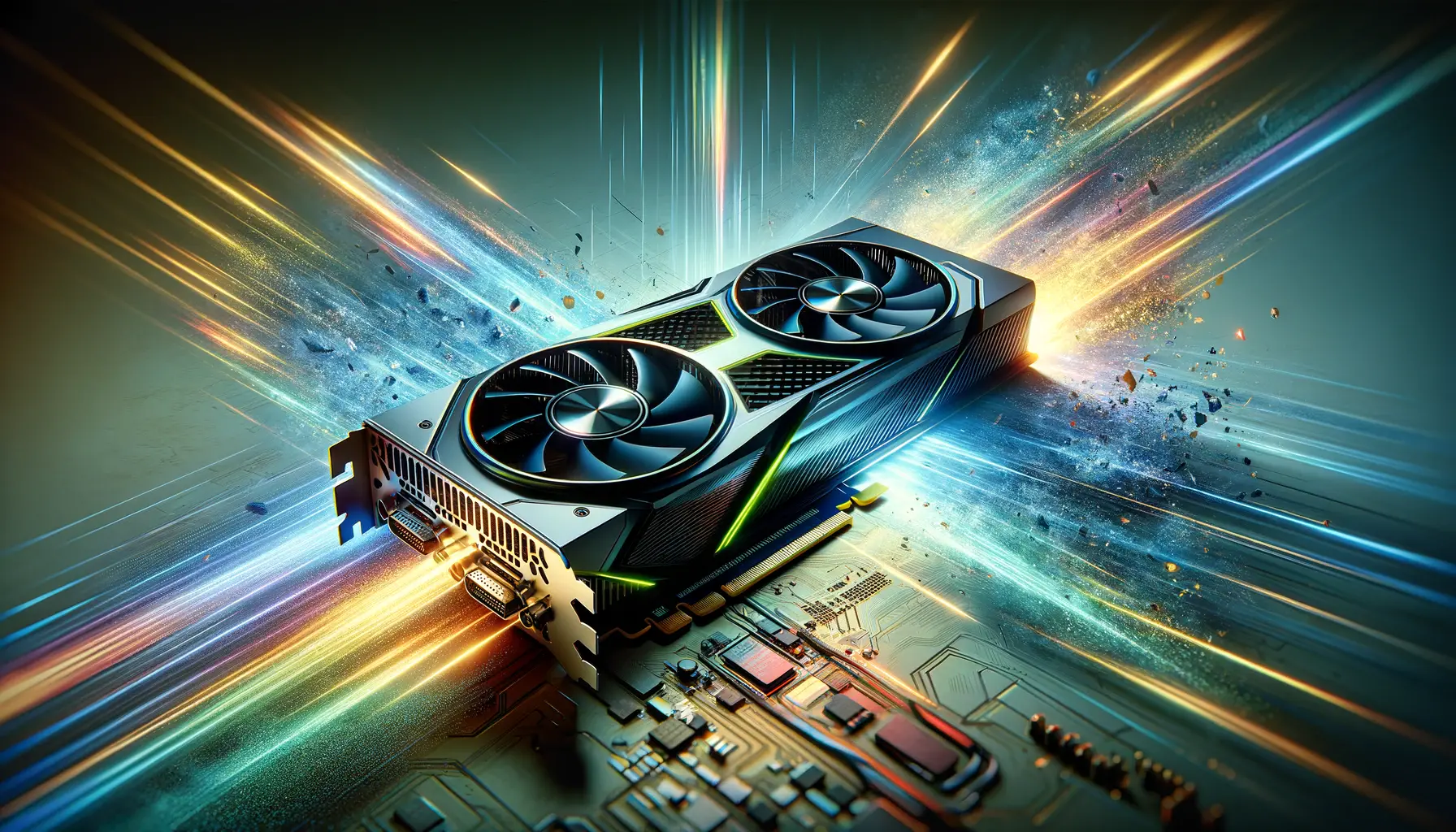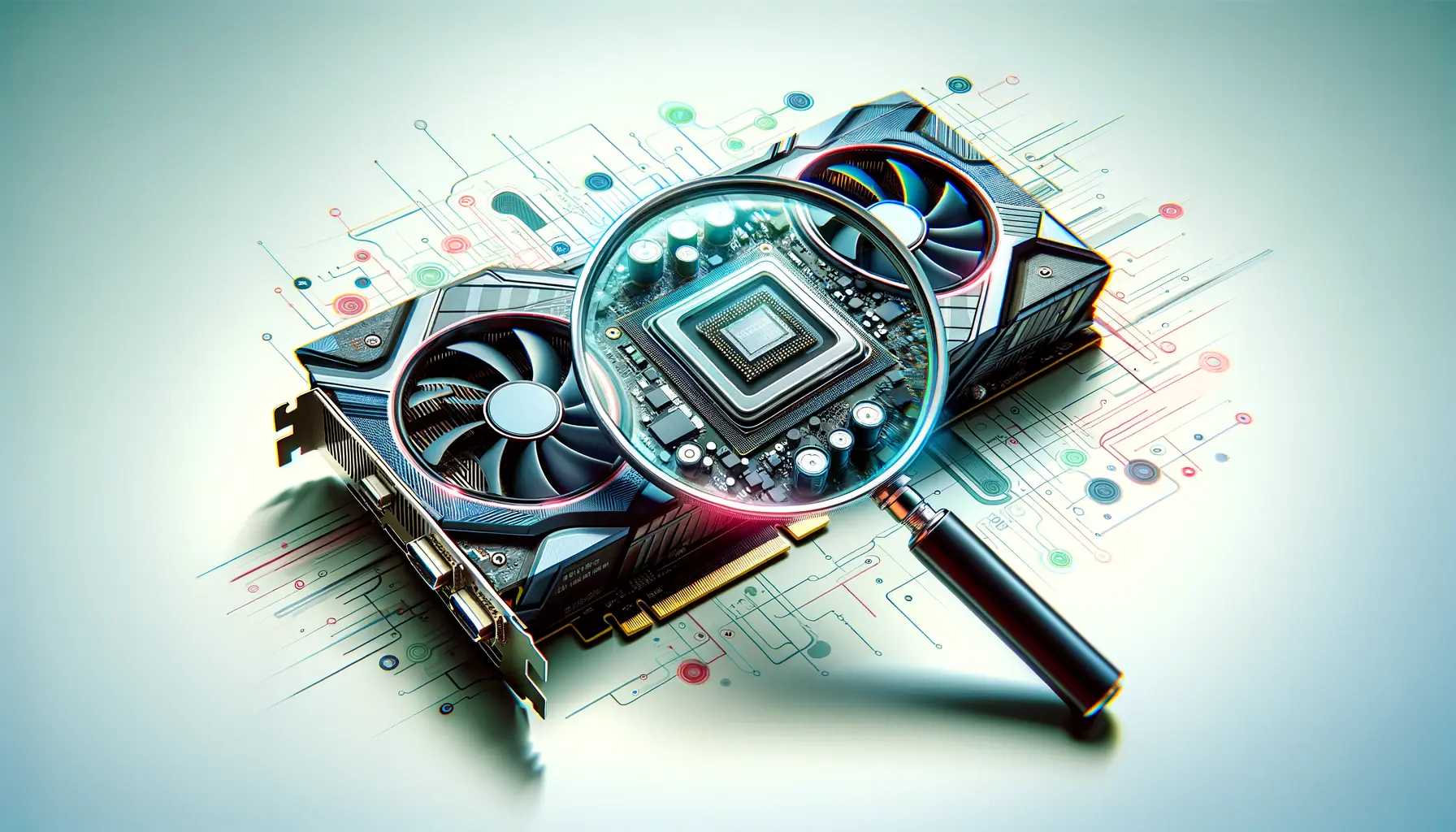The realm of gaming and graphical fidelity has been revolutionized with the advent of NVIDIA’s Deep Learning Super Sampling (DLSS) technology, particularly with its latest iteration, DLSS 3.
This groundbreaking technology has been a topic of much discussion within the gaming community, sparking debates on its performance, impact, and the future of gaming visuals.
NVIDIA DLSS 3, as a cutting-edge AI-driven feature, promises to enhance gaming experiences by significantly boosting frame rates while maintaining, and in some cases, improving image quality.
The community’s feedback, ranging from ecstatic endorsements to critical scrutiny, offers a multifaceted view of DLSS 3’s real-world implications.
At the heart of DLSS 3 is its innovative approach to rendering.
By leveraging artificial intelligence to upscale images in real-time, it allows for smoother gameplay on NVIDIA’s latest RTX 40-series graphics cards.
This technology not only aims to push the boundaries of what’s possible in gaming graphics but also seeks to redefine the balance between performance and visual fidelity.
The community’s response to DLSS 3 has been varied, with gamers and tech enthusiasts alike weighing in on its effectiveness, compatibility, and overall impact on the gaming landscape.
- Understanding DLSS 3 Technology
- Optimizing Game Performance with DLSS 3
- Compatibility and Support Across Games
- Impact on Gaming Hardware Requirements
- Visual Quality and Realism Enhancements
- Challenges and Limitations of DLSS 3
- Community Engagement and Future Developments
- Embracing the Future with NVIDIA DLSS 3
- NVIDIA DLSS 3: Frequently Asked Questions
Understanding DLSS 3 Technology
Before diving into the community’s feedback, it’s crucial to understand what DLSS 3 entails and why it has become a topic of such interest.
DLSS, or Deep Learning Super Sampling, is NVIDIA’s proprietary AI-driven technique designed to increase the resolution of rendered frames in video games without the traditional computational load.
By doing so, it allows for higher frame rates and smoother gameplay without sacrificing visual quality.
DLSS 3, the latest version, introduces several advancements over its predecessors, including improved AI algorithms and the introduction of frame generation technology.
DLSS 3’s frame generation technology is particularly noteworthy.
It works by interpolating frames, effectively generating additional frames between those rendered by the game’s engine.
This process significantly increases the perceived smoothness and responsiveness of gameplay, a feature that has been met with both acclaim and skepticism by the gaming community.
The technology’s ability to deliver a more fluid gaming experience on supported titles has been praised, but it has also raised questions about the authenticity of generated frames versus traditionally rendered ones.
Community Reactions to DLSS 3
The reception of DLSS 3 within the gaming community has been a mix of excitement and caution.
On one hand, many gamers have lauded the technology for its ability to deliver unprecedented performance improvements, particularly in demanding titles that require significant graphical power.
The promise of smoother gameplay at higher resolutions has been a significant draw for those looking to push their gaming rigs to the limit.
On the other hand, some members of the community have expressed concerns over the potential for artificial frames to introduce artifacts or affect the gaming experience in unforeseen ways.
Discussions on gaming forums and social media platforms reveal a broad spectrum of experiences with DLSS 3.
Users report a range of outcomes, from dramatic improvements in games like ‘Cyberpunk 2077’ and ‘Control’, where the technology shines in its ability to upscale from lower resolutions without noticeable loss in quality, to challenges in other titles where the implementation may not be as polished.
These varied experiences highlight the technology’s potential while also underscoring the importance of developer support and optimization for DLSS 3 to reach its full potential.
The key to maximizing DLSS 3’s benefits lies in ongoing optimization and support from both NVIDIA and game developers, ensuring that the technology can be fully leveraged across a wide range of titles.
Optimizing Game Performance with DLSS 3
One of the most discussed aspects of DLSS 3 within the gaming community is its impact on game performance.
The technology’s core promise is to deliver higher frame rates without compromising on visual quality, a proposition that has significant implications for both gamers and game developers.
This section explores how DLSS 3 optimizes game performance and the community’s perspective on its effectiveness.
DLSS 3 achieves performance optimization through a combination of deep learning algorithms and dedicated hardware support.
By analyzing thousands of game frames, DLSS 3’s AI models learn how to efficiently upscale lower-resolution images to higher resolutions, filling in the gaps with intelligently generated pixels.
This process allows games to run at lower native resolutions while outputting images that look as good as, or in some cases better than, native high-resolution images.
The result is a smoother gaming experience with higher frame rates, particularly beneficial for users with high-refresh-rate monitors.
Community Experiences with Performance Gains
- Positive Feedback: Many users report significant improvements in frame rates while maintaining high image quality, especially in graphically intensive games. The ability to play at higher resolutions with better performance has been a game-changer for users with 4K monitors.
- Mixed Reactions: Some users have experienced varying levels of success with DLSS 3, noting that while performance gains are noticeable, they sometimes come at the cost of minor visual artifacts or inconsistencies, particularly in fast-moving scenes.
- Developer Support: The community has also highlighted the importance of developer support for DLSS 3, pointing out that games optimized for DLSS 3 tend to offer a more seamless experience. This underscores the need for close collaboration between NVIDIA and game developers to ensure optimal implementation.
Despite the overwhelmingly positive reception, the nuanced feedback from the community suggests that there is still room for improvement.
NVIDIA’s continuous updates to DLSS 3 and its AI models, along with increasing support from game developers, are crucial for addressing these concerns and unlocking the full potential of this technology.
While DLSS 3 significantly enhances performance and visual quality, its success is closely tied to the level of optimization and support provided by game developers.
Compatibility and Support Across Games
The effectiveness and appeal of NVIDIA DLSS 3 extend beyond its technical capabilities, touching on its compatibility and support across a wide range of games.
The technology’s adoption by game developers and its integration into gaming titles are critical for its success and widespread acceptance within the community.
This part delves into the current state of DLSS 3 support across the gaming industry and the community’s response to its integration.
For DLSS 3 to function as intended, games must be specifically developed or updated to support the technology.
This requires collaboration between NVIDIA and game developers, ensuring that DLSS 3 is seamlessly integrated and optimized for each title.
The growing list of games supporting DLSS 3 showcases NVIDIA’s commitment to expanding the technology’s reach, but it also highlights the challenges and considerations involved in its adoption.
Expanding Game Support for DLSS 3
- Supported Titles: The number of games that support DLSS 3 has been steadily increasing, with major titles and indie games alike adopting the technology. This expansion is a testament to its potential to enhance gaming experiences across different genres and graphical demands.
- Developer Adoption: The rate of adoption among developers varies, with some eagerly integrating DLSS 3 into their titles, while others adopt a wait-and-see approach. Factors influencing this decision include the technical demands of integration and the target audience’s hardware capabilities.
- Community Advocacy: The gaming community plays a significant role in advocating for DLSS 3 support in their favorite titles. Through forums and social media, gamers express their desire for DLSS 3 integration, highlighting its benefits and encouraging developers to adopt the technology.
The community’s feedback on game compatibility and support is generally positive, with many gamers appreciating the efforts of NVIDIA and developers to broaden DLSS 3’s adoption.
However, there is also a call for more transparency regarding future support for titles and the potential for retroactive integration into older games.
Gamers are keen on seeing DLSS 3 become a standard feature in future releases, ensuring that the benefits of the technology are accessible to a wider audience.
The widespread adoption of DLSS 3 by game developers is crucial for its success, with the gaming community playing a pivotal role in advocating for its integration across more titles.
Impact on Gaming Hardware Requirements
The introduction of NVIDIA DLSS 3 has not only transformed gaming experiences but also had a profound impact on gaming hardware requirements.
By enabling higher performance with less computational demand, DLSS 3 allows gamers to achieve superior visual fidelity without needing to invest in the most powerful hardware.
This section explores how DLSS 3 is reshaping the landscape of gaming hardware requirements and the community’s perspective on this shift.
Traditionally, achieving high frame rates and resolutions in the latest games required top-tier graphics cards and CPUs.
However, DLSS 3’s efficient upscaling and frame generation capabilities mean that even mid-range hardware can now deliver smooth gameplay at resolutions that were previously out of reach.
This democratization of high-quality gaming experiences is a significant development, potentially altering how gamers and the industry approach hardware upgrades and system requirements.
Reducing the Need for High-End Hardware
- Accessibility: DLSS 3 has made 4K gaming more accessible to a broader audience, reducing the need for the latest and most expensive GPUs. Gamers can enjoy high-resolution gaming on mid-range hardware, extending the lifespan of their current setups.
- System Upgrades: The technology’s ability to deliver enhanced performance has led some gamers to reconsider the urgency of hardware upgrades. With DLSS 3, the performance gap between mid-range and high-end hardware narrows, allowing for more strategic upgrade decisions.
- Future-Proofing: For gamers looking to future-proof their systems, DLSS 3 offers a compelling reason to invest in NVIDIA’s RTX series. The technology ensures that even as games become more graphically demanding, supported hardware will continue to deliver optimal performance.
The gaming community has largely welcomed the impact of DLSS 3 on hardware requirements, appreciating the opportunity to enjoy advanced gaming experiences without the need for constant, costly upgrades.
However, there is also a recognition that the full benefits of DLSS 3 are currently limited to those with NVIDIA’s RTX series GPUs, highlighting a divide in access to this technology.
As DLSS 3 continues to evolve and potentially inspire similar innovations from other hardware manufacturers, the future of gaming hardware requirements looks set to change in significant ways.
DLSS 3 is reshaping gaming hardware requirements, making high-quality gaming experiences more accessible and reducing the need for frequent hardware upgrades.
Visual Quality and Realism Enhancements
The core appeal of NVIDIA DLSS 3 extends beyond performance improvements, touching deeply on its ability to enhance visual quality and realism in games.
This technology, through its sophisticated AI algorithms, not only boosts frame rates but also improves the overall visual presentation, making games look more realistic and immersive.
This part of the article delves into how DLSS 3 contributes to visual enhancements and the gaming community’s reception of these improvements.
DLSS 3 utilizes deep learning to intelligently upscale images, ensuring that even when games are rendered at lower resolutions, the output appears sharp and detailed.
This process involves analyzing each frame in real-time, predicting and generating high-quality images that rival or surpass native resolution quality.
The result is a gaming experience that combines the best of both worlds: high performance and stunning visuals.
Enhancing Game Immersion with DLSS 3
- Detail Preservation: One of the most praised aspects of DLSS 3 is its ability to preserve fine details in games, even when upscaling from lower resolutions. This ensures that textures, shadows, and lighting retain their quality, contributing to a more immersive gaming experience.
- Realism: DLSS 3’s advanced AI algorithms are capable of adding a level of realism to games that was previously difficult to achieve. By improving the clarity and detail of images, games feel more lifelike, enhancing the player’s immersion in the game world.
- Artifacts Reduction: While earlier versions of DLSS sometimes struggled with visual artifacts, DLSS 3 has made significant strides in reducing these issues. The community has noted the technology’s improved ability to deliver clean, artifact-free images, further enhancing visual quality.
The gaming community’s feedback on DLSS 3’s visual quality enhancements has been overwhelmingly positive.
Gamers appreciate the technology’s ability to deliver both performance and visual improvements, noting that it significantly enhances the realism and immersion of their gaming experiences.
However, there remains a keen interest in seeing how NVIDIA will continue to refine DLSS 3, particularly in terms of further reducing any minor artifacts and expanding the technology’s benefits to a wider range of games and graphical settings.
DLSS 3’s contribution to visual quality and realism in games is a major factor in its positive reception, offering gamers an unparalleled level of immersion and detail.
Challenges and Limitations of DLSS 3
While NVIDIA DLSS 3 has been met with considerable acclaim for its performance enhancements and visual improvements, it’s not without its challenges and limitations.
These aspects are crucial for understanding the technology’s current state and its potential trajectory.
This section examines the hurdles DLSS 3 faces, including technical limitations, compatibility issues, and the broader implications for the gaming community.
Despite the impressive advancements DLSS 3 brings to the table, certain technical and practical challenges affect its adoption and effectiveness.
From game compatibility to the nuances of AI-generated content, these challenges shape the community’s discussions and expectations around DLSS 3.
Technical Hurdles and Compatibility Concerns
- Game Integration: Integrating DLSS 3 into games is not always straightforward. Developers must work closely with NVIDIA to ensure their titles can fully leverage the technology. This process can be resource-intensive, potentially limiting DLSS 3’s adoption among smaller studios.
- AI Artifacts: While DLSS 3 significantly reduces visual artifacts compared to previous versions, some gamers report occasional issues, especially in fast-paced scenes or complex environments. These instances, though rare, highlight the ongoing need for refinement.
- Hardware Exclusivity: Currently, DLSS 3 is only available on NVIDIA’s RTX 40-series graphics cards, limiting its accessibility to a segment of the gaming community. This exclusivity raises questions about the broader impact of such advanced technologies on the gaming ecosystem.
The challenges facing DLSS 3 are part of its evolution.
The gaming community plays a vital role in identifying these issues, providing feedback that guides NVIDIA’s ongoing development efforts.
While the limitations are noteworthy, they are often seen as stepping stones toward the technology’s maturity rather than insurmountable obstacles.
Future Prospects and Community Expectations
Looking forward, the community’s expectations for DLSS 3 are high.
Gamers and developers alike are keenly interested in how NVIDIA will address the current challenges, particularly in making DLSS 3 more accessible and reducing the technical barriers to its adoption.
The potential for DLSS 3 to become a universal feature in future games is a topic of much excitement and speculation, underscoring the technology’s significance in the gaming world.
Despite the hurdles, the overall sentiment towards DLSS 3 remains positive, with many in the community viewing it as a transformative technology that will continue to evolve.
The dialogue between NVIDIA, game developers, and gamers is crucial for navigating these challenges, ensuring that DLSS 3 reaches its full potential and continues to redefine gaming experiences.
While DLSS 3 faces challenges, including technical limitations and hardware exclusivity, these are viewed as opportunities for growth and improvement by the gaming community.
Community Engagement and Future Developments
The dialogue between NVIDIA and the gaming community is a pivotal aspect of DLSS 3’s ongoing development and refinement.
Community engagement, through feedback, forums, and social media, plays a crucial role in shaping the future of DLSS 3.
This final section explores how community input influences DLSS 3’s trajectory and the anticipated future developments that could further revolutionize gaming experiences.
NVIDIA’s approach to community engagement has been proactive, with the company actively seeking feedback from gamers and developers.
This feedback loop is essential for identifying areas of improvement, understanding user experiences, and integrating community suggestions into future updates.
The anticipation surrounding future developments of DLSS 3 is a testament to the technology’s impact and the community’s investment in its success.
Anticipated Enhancements and Expansions
- Broader Compatibility: One of the most requested developments from the community is the expansion of DLSS 3 compatibility to include more games and potentially older graphics hardware. This would make the benefits of DLSS 3 accessible to a wider audience, democratizing high-quality gaming experiences.
- Refinement of AI Algorithms: Continuous improvement of the AI algorithms that power DLSS 3 is another area of focus. The community is eager for advancements that further reduce artifacts and enhance the technology’s ability to deliver realistic and immersive visuals.
- Increased Developer Support: Strengthening support for game developers, particularly smaller studios, is crucial for the widespread adoption of DLSS 3. Tools, resources, and more streamlined integration processes are highly anticipated to facilitate the inclusion of DLSS 3 in a broader range of games.
The future of DLSS 3 is closely tied to the ongoing partnership between NVIDIA, the gaming community, and developers.
The collective enthusiasm for the technology’s potential to transform gaming is clear, with many looking forward to the innovations and improvements that lie ahead.
As DLSS 3 continues to evolve, it promises to redefine the boundaries of performance, visual quality, and realism in gaming.
The engagement and feedback from the gaming community are invaluable assets for NVIDIA as it navigates the future of DLSS 3.
By addressing the current challenges and exploring new possibilities, DLSS 3 is poised to remain at the forefront of gaming technology, offering gamers and developers alike new opportunities to push the limits of what’s possible in digital entertainment.
The active engagement between NVIDIA and the gaming community is shaping the future of DLSS 3, with anticipated developments poised to further enhance gaming experiences for a wider audience.
Embracing the Future with NVIDIA DLSS 3
The journey through the intricacies of NVIDIA DLSS 3 and its reception within the gaming community reveals a technology at the forefront of revolutionizing gaming experiences.
From enhancing performance to improving visual quality, DLSS 3 stands as a testament to NVIDIA’s commitment to innovation.
Yet, the technology’s true value is reflected in the community’s feedback, which ranges from enthusiastic acclaim to constructive criticism, all contributing to the ongoing development of DLSS 3.
The Path Forward for DLSS 3
As we look to the future, several key areas emerge as focal points for NVIDIA and the gaming community.
The continuous refinement of DLSS 3, broader game compatibility, and further democratization of high-quality gaming experiences are at the heart of these discussions.
The anticipation of these developments underscores the community’s role not just as beneficiaries of DLSS 3 but as active participants in its evolution.
Community and Innovation: A Synergistic Relationship
The symbiotic relationship between NVIDIA and its users is a driving force behind DLSS 3’s success.
This partnership highlights the importance of community feedback in shaping technological advancements.
As NVIDIA continues to navigate the challenges and opportunities presented by DLSS 3, the community’s insights will remain invaluable.
Together, they are setting the stage for a future where gaming is more immersive, accessible, and visually stunning than ever before.
- Broader Compatibility and Accessibility: Expanding DLSS 3’s reach to include a wider range of games and hardware.
- AI and Visual Fidelity: Advancing AI algorithms to further enhance visual realism and reduce artifacts.
- Support for Developers: Providing more resources and tools to facilitate DLSS 3 integration, especially for smaller studios.
In conclusion, NVIDIA DLSS 3 represents a significant leap forward in gaming technology, driven by a commitment to excellence and a deep understanding of the gaming community’s needs.
As DLSS 3 continues to evolve, it promises to redefine the boundaries of gaming performance and visual quality.
The journey ahead is filled with potential, with NVIDIA and the gaming community working hand in hand to explore the vast possibilities of this transformative technology.
NVIDIA DLSS 3: Frequently Asked Questions
Explore the most common inquiries about NVIDIA DLSS 3, offering insights into its features, compatibility, and impact on gaming.
DLSS 3 is NVIDIA’s latest AI-driven technology, enhancing game performance and visual quality by intelligently upscaling images and generating additional frames.
DLSS 3 is supported on NVIDIA GeForce RTX 40 Series GPUs, leveraging their advanced AI capabilities for optimal performance.
DLSS 3 improves performance by using AI to generate frames and upscale images, allowing for smoother gameplay and higher frame rates at superior resolutions.
DLSS 3 is designed for the RTX 40-series GPUs and cannot be used with previous generations due to its specific hardware requirements.
DLSS 3 is compatible with a growing list of games, with developers continuously adding support to leverage its performance and visual enhancements.
DLSS 3 enhances visual quality by generating high-resolution images from lower resolutions, preserving detail and improving overall game visuals.
The main limitation of DLSS 3 is its exclusivity to RTX 40-series GPUs, requiring specific hardware for its advanced features.
Enabling DLSS 3 involves accessing the game’s graphics settings and selecting DLSS 3 from the available options, provided the hardware is compatible.
